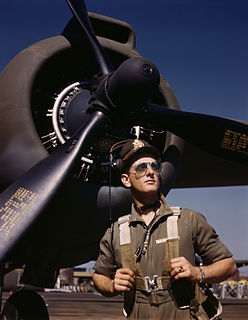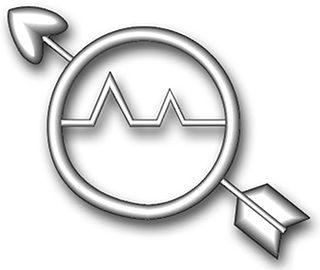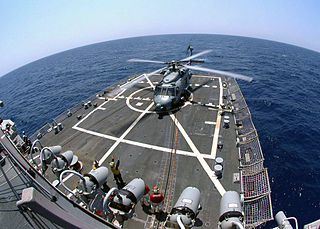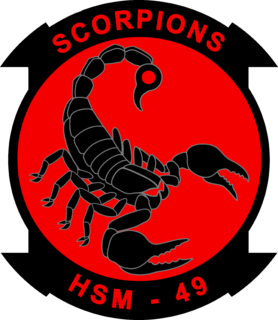This article needs additional citations for verification .(August 2008) (Learn how and when to remove this template message) |

Shipboard helicopter operations is the use of techniques which allows operation of rotary wing aircraft from naval vessels. In the case of military vessels the operations also include tactics and associated weapons and troops.

Military tactics encompasses the art of organising and employing fighting forces on or near the battlefield. They involve the application of four battlefield functions which are closely related – kinetic or firepower, mobility, protection or security, and shock action. Tactics are a separate function from command and control and logistics. In contemporary military science, tactics are the lowest of three levels of warfighting, the higher levels being the strategic and operational levels. Throughout history, there has been a shifting balance between the four tactical functions, generally based on the application of military technology, which has led to one or more of the tactical functions being dominant for a period of time, usually accompanied by the dominance of an associated fighting arm deployed on the battlefield, such as infantry, artillery, cavalry or tanks.
Landing a helicopter on the flight deck of what is sometimes a small ship in heavy seas presents the pilot with a challenges that include: deck movement, turbulent airflows, and using control systems that were not necessarily designed for the marine environment.

The flight deck of an aircraft carrier is the surface from which its aircraft take off and land, essentially a miniature airfield at sea. On smaller naval ships which do not have aviation as a primary mission, the landing area for helicopters and other VTOL aircraft is also referred to as the flight deck. The official U.S. Navy term for these vessels is "air-capable ships".

A ship is a large watercraft that travels the world's oceans and other sufficiently deep waterways, carrying passengers or goods, or in support of specialized missions, such as defense, research and fishing. Historically, a "ship" was a sailing vessel with at least three square-rigged masts and a full bowsprit. Ships are generally distinguished from boats, based on size, shape, load capacity, and tradition.

An aircraft pilot or aviator is a person who controls the flight of an aircraft by operating its directional flight controls. Some other aircrew members, such as navigators or flight engineers, are also considered aviators, because they are involved in operating the aircraft's navigation and engine systems. Other aircrew members, such as flight attendants, mechanics and ground crew, are not classified as aviators.
Flight operations of shipboard helicopter operations include preparing the aircraft and crew for the mission, cargo and ordnance handling (for armed helicopters), passenger supervision, aircraft departure, communications with the ship during the mission and recovery.

Aircraft ordnance or ordnance is weapons used by aircraft. The term is often used when describing the weight of air-to-ground weaponry that can be carried by an aircraft or the weight that has been dropped. Aircraft ordnance also includes air-to-air, anti-ship and anti-submarine weapons.

An armed helicopter is a military helicopter equipped with aircraft ordnance. Most commonly, it is used for attacking targets on the ground. Such a helicopter could be either purposely designed for a ground-attack mission—in which case it would be more specifically categorized as an attack helicopter—or may have been previously designed for other uses, such as utility, air cargo, aerial reconnaissance, etc., with the weapons mounts being modifications, rather than part of the design of the helicopter. The purpose of the modification to an armed helicopter configuration can be field expediency during combat, the lack of military funding to develop or purchase attack helicopters, or the need to maintain the helicopter for missions that do not require the weapons.
Apart from the more routine passenger and cargo transportation missions, shipboard helicopter operations are used by civilian and military operators to conduct search and rescue missions, while what for the civilian operators is often electronic news gathering, for the military becomes intelligence gathering missions or battlefield surveillance and reconnaissance. Some helicopters, such as the Kamov Ka-31 airborne early warning helicopter, fulfil specialised roles. The SH-60 Seahawk's roles can include antisubmarine warfare, anti-surface warfare, special forces insertion, combat search and rescue, vertical replenishment and medical evacuation.

Search and rescue (SAR) is the search for and provision of aid to people who are in distress or imminent danger. The general field of search and rescue includes many specialty sub-fields, typically determined by the type of terrain the search is conducted over. These include mountain rescue; ground search and rescue, including the use of search and rescue dogs; urban search and rescue in cities; combat search and rescue on the battlefield and air-sea rescue over water.

A surveillance aircraft is an aircraft used for surveillance—collecting information over time. They are operated by military forces and other government agencies in roles such as intelligence gathering, battlefield surveillance, airspace surveillance, observation, border patrol and fishery protection. This article concentrates on aircraft used in those roles, rather than for traffic monitoring, law enforcement and similar activities.

In military operations, reconnaissance or scouting is the exploration outside an area occupied by friendly forces to gain information about natural features and other activities in the area.
The first shipboard helicopter operations were attempted by the Wehrmacht during the Second World War in the Baltic Sea.[ citation needed ] The British had trialled autogyros with aircraft carriers before the war but joined with the USN in testing the Sikorsky helicopters at sea providing the Empire Mersey and its replacement the SS Daghestan in 1942/43. The first purpose-built helicopter operation vessels were Liberty ships converted by the US Army in June 1945 into floating repair depots. They included special landing platforms to accommodate Sikorsky R-4 helicopters. [1]

The Baltic Sea is a marginal sea of the Atlantic Ocean, enclosed by Denmark, Estonia, Finland, Latvia, Lithuania, Sweden, northwest Germany, Poland, Russia and the North and Central European Plain.

Liberty ships were a class of cargo ship built in the United States during World War II. Though British in concept, the design was adapted by the United States for its simple, low-cost construction. Mass-produced on an unprecedented scale, the Liberty ship came to symbolize U.S. wartime industrial output.



















